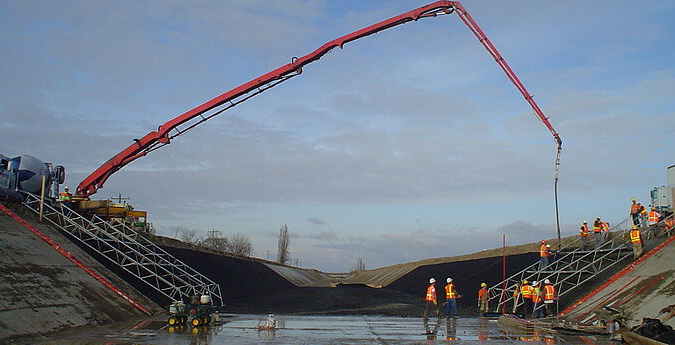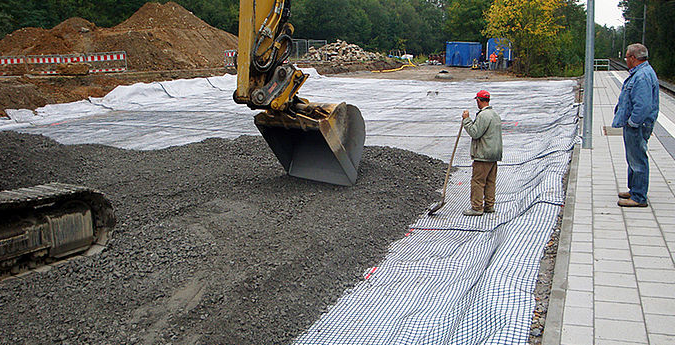Geosynthetica editor Chris Kelsey checks in with Lilma Schimmel, Head of Engineering for HUESKER North America. The company has a long history with geosynthetic composites. Market interest in enhancing infrastructure performance with composite materials has grown at such a rate that engineering design services have become a larger part of the conversation than manufacturing.
It’s really about partnership with design engineers to achieve the best project results, Schimmel notes.
COMPOSITE MATERIALS IN GEOSYNTHETICS
Twenty years ago, the term “geocomposite” was used almost exclusively in regards to drainage geocomposites, such as a filtration geotextile laminated to a geonet or plastic core. These weren’t the only composites in use. Geosynthetic clay liners (GCLs), for example, are composites by their nature.
Something changed in the field’s terminology, though. Geosynthetica first noticed the transition during the 2008/2009 global financial crisis. Private and public infrastructure funding shifted quickly, and generally in the wrong direction for business growth. Manufacturers had more time for R&D. This led to the promotion of numerous enhancements of existing products.
The term geocomposite was applied much more broadly to reflect what these enhanced geosynthetics actually were.

At the time, HUESKER was already a company active in composite materials. Its footprint has continued to grow, especially with the significant investment it has made in manufacturing. Today, you’ll find that the firm continues to produce major product category geosynthetics (e.g., geogrids, geotextiles) while also offer a large portfolio of composite materials. These include barriers enhanced with activated carbon on a nonwoven surface, geomembranes protected on both sides by nonwovens, geogrids combined with a geotextiles in a single roll product, etc.
“For us, geocomposites are not so much on the drainage side,” Schimmel says. “They’re more for environmental applications.”
For example, geosynthetic composite materials have grown in capping applications, such as with contaminated sediments, coal ash, and other sensitive zones. Composites with reinforcement (geogrid) and separation/drainage (geotextile) have enabled multiple functions to be provided to installations on wind farms, roadways, container yards, and more. Membranes sandwiched between protection nonwovens improve frictional characteristics and make for efficient installation in water conveyance designs, such as for canals.
“We don’t want to be perceived as a manufacturer of geocomposites or geosynthetics,” Schimmel says. “We want to help the client with solutions.”
MORE GEOTALK: The Advantages of Multi-Component Geosynthetic Clay Liners
Those solutions may or may not involve geosynthetics.
“We want to partner with the designer to come up with the best solution,” she says. “That’s one of our core values.”

This change in how conversations in the field are framed isn’t a rejection of the company’s rich history in manufacturing, and it certainly doesn’t sign a change in focus. HUESKER tripled the size of its major North American manufacturing center only a few years ago. But emphasizing design first recognizes the importance of providing guidance—or partnership, as Schimmel refers to it—in how to approach projects and, where geosynthetics are the right solution, how to appropriately design with them.
Geosynthetic composite materials are playing a big role in this transition, because they enable more site specific solutions and enhanced performance characteristics. Design experts within manufacturing entities bring a more detailed understanding of how and why the composite materials have been improved, such as through needlepunching, lamination, coating, or other means.
It’s a form of partnership that stands out and is beneficially impacting the field.
For more information on HUESKER’s geosynthetic materials, infrastructure markets, and engineering services, visit www.huesker.com.
Subscribe to GeoTalk updates (via Libsyn) or in the Apple Podcasts app. Visit the iPhone App Store to download it (for free) and search for GeoTalk.












